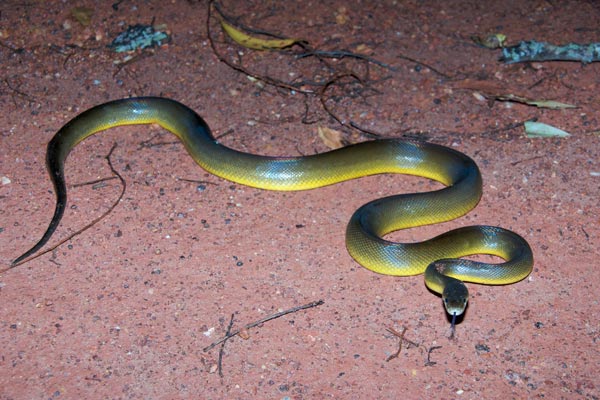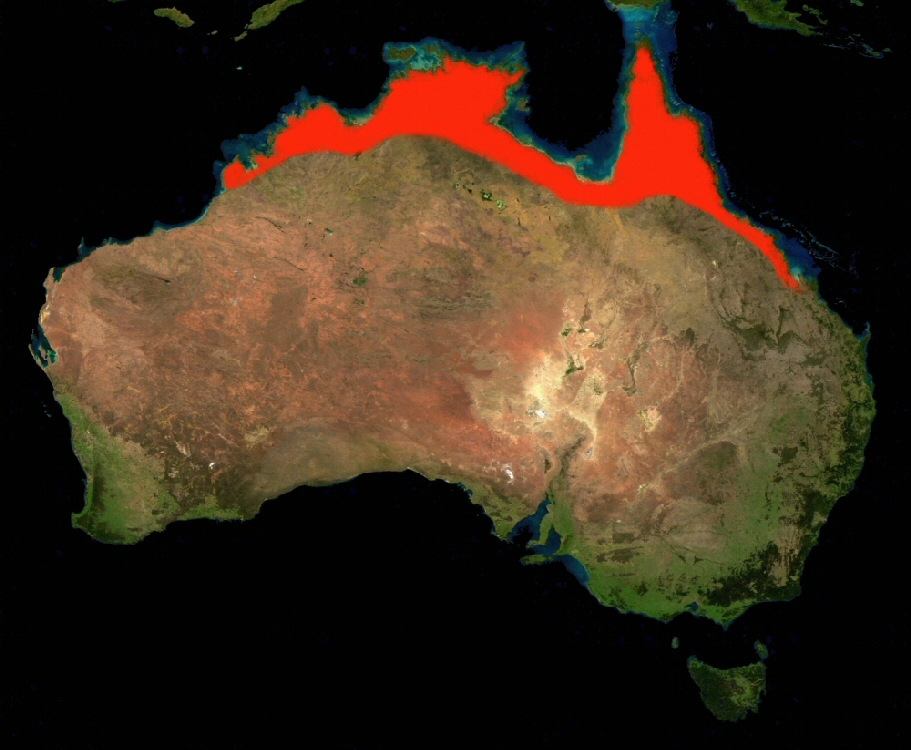Post by Ceratodromeus on Jan 9, 2016 10:15:03 GMT 5

Scientific classification
Kingdom: Animalia
Phylum: Chordata
Subphylum: Vertebrata
Class: Squamata
Order: Reptilia
Suborder: Serpentes
Family: Pythonidae
Genus: Liasis
Species: L. fuscus
Description
Despite their common name, these snakes are not tied to the water, and spend large amounts of time away from it. They are however, a uniform dark brown coloration. Depending on the individual, coloration of the underbelly ranges from a dull to bright yellow. Like most other pythons, the Brown water python has thermosensory pits located on the end of its snout. These snakes are large, robustly proportioned animals. Adults typically measure 1.3-1.4 meters(4.2-4.5ft)in snout-vent length{1}, but large individuals can measure up to 2.2 meters in SVL. The largest recorded individual measured 3 meters(9.8ft) in total body length{2}.

Geographic range
This snake is widespread through most of the tropical coasts of Australia, from Broome to Adelaide, but can also be found on Papau New Guinea, and at least one Indonesian island.

Dietary habits
This snake feeds on a large variety of verebrates. Skinks (Scinidae spp.) Varanids (Varanidae spp.), Chickens (Gallus gallus domesticus), Bandicoots (Isoodon macrourus), rock rats (Zyzomys argurus), mice (Mus domesticus), Rats (Rattus rattus, Rattus colletti, Rattus norvegicus), and Rabbits (Oryctolagus cuniculus) Have all been recorded in the stomachs of the Brown water python{1}. Where the dusky rat (Rattus colletti) is sympatric with this species of python, it is a common prey item{3}.
Reproduction
Mating occurs in the spring, with a clutch containing anywhere from 3-24 eggs, though a clutch size of 10 is far more common{1}. Females often use the burrows of varanids lizards to lay their eggs, which hatch approximately 60 days later if the incubation temperature is optimal(28-32°C){3}. As hatchlings, these snakes have a very high metabolism, and grow quickly in their first few years -- with most attaining adult size by the age of two.
References
{1} Shine, Richard, and David J. Slip. "Biological aspects of the adaptive radiation of Australasian pythons (Serpentes: Boidae)." Herpetologica (1990): 283-290.
{2} Madsen, Thomas, and Richard Shine. "Silver spoons and snake body sizes: prey availability early in life influences long‐term growth rates of free‐ranging pythons." Journal of Animal Ecology 69.6 (2000): 952-958.
{3} Shine, Richard, and Thomas Madsen. "Prey abundance and predator reproduction: rats and pythons on a tropical Australian floodplain." Ecology 78.4 (1997): 1078-1086.
{4} Shine, Richard, et al. "The influence of nest temperatures and maternal brooding on hatchling phenotypes in water pythons." Ecology 78.6 (1997): 1713-1721.


